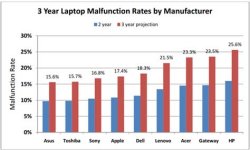cj7hawk
Veteran Member
Absolutely. Though I think bringing it to the US was a mistake - Sinclair's name was barely known in the US, and there was no shortage of local supply of computers and by the time it appeared in the US, the price was the only thing going for it. That the Russian and Japanese example persisted for another *decade* though is remarkable and still indicates what a world without IBM might have looked like.Your points are well taken. The Sinclair which was released here in the US was known as a Timex. It was boon to hobbyist at under 100 USD but needed a TV monitor and adapter. Perfect for the youngsters, but a stretch for serious users. The Tandy Model 1, Model II, Models III & 4 all used a form of the Z80. Although the 5 million or so European Sinclair units used the Z80, it seems to have eventually to have seen a dead end.
Though while the computers at the low end were not really suited to anything of note, they did have the unique position of being affordable to children, which is the only reason I think consoles have survived to this day. Children not only become attached to their computers, but learn to program and operate them and take on an affinity to their brand. I think this explains why some z80 machines persisted towards the end of the 1990's. A good corporate policy should be to engage childred while they are young, then keep supplying them a better product when they become adults... Like the Tobacco industry does exhibits so well. This would have played a key part of Apple's success.
It's also one reason why I think Sinclair ( and *not* Amstrad ) could have progressed the z80 through more iterations and exhibited the same outcome as the Japanese and Eastern Europeans achieved, though mainly in the UK and parts of Western Europe. And perhaps also the colonies.
Don't hold back, Dish on Zilog. It's deserved -There was no advancement and boils down to a "shoulda, woulda, coulda" scenario for Zilog. Motorola, a huge conglomerate in its own right, couldn't sustain the pressure from Intel and AMD in the PC world, and their somewhat slow chips wound up mostly in washing machines and the like. So, I'm not dishing on Zilog - it's just a matter of the level of technology and sales performance that one brings to the table. The US made Tucker automobile from the late 1940s is a good example; he, Tucker, had the product that could potentially rock the entire US auto industry but not the wherewithal to become a viable factor against big business.



